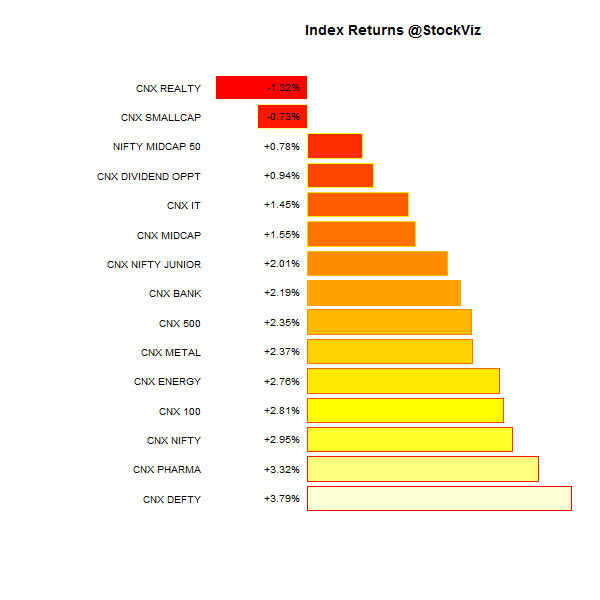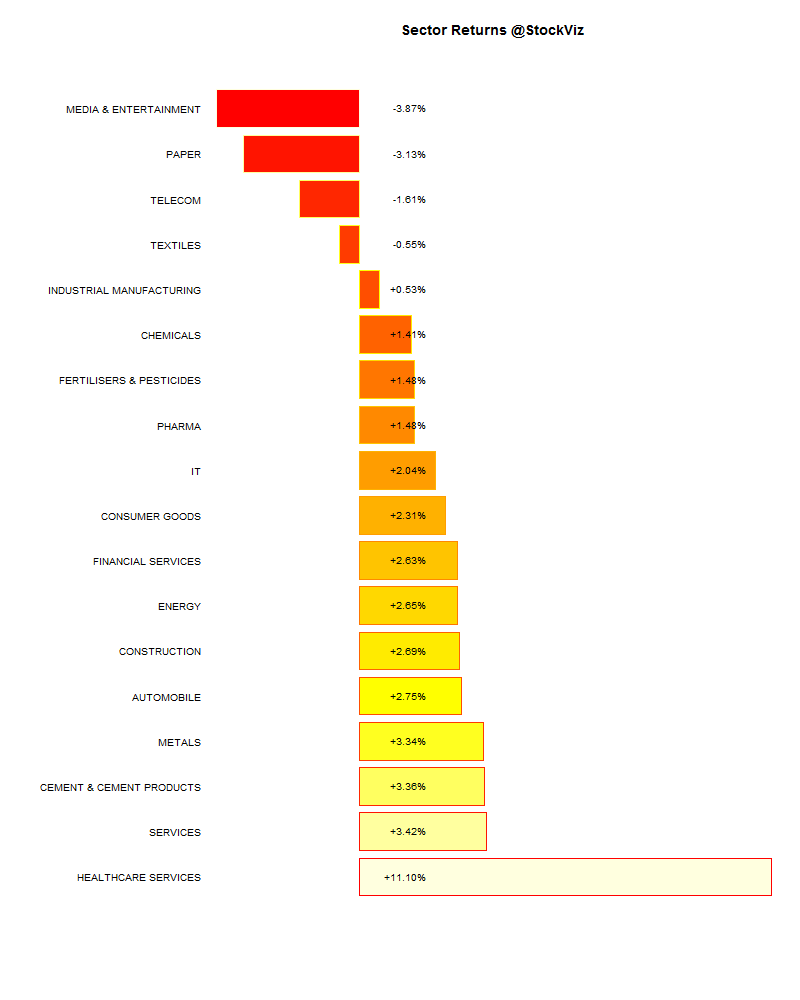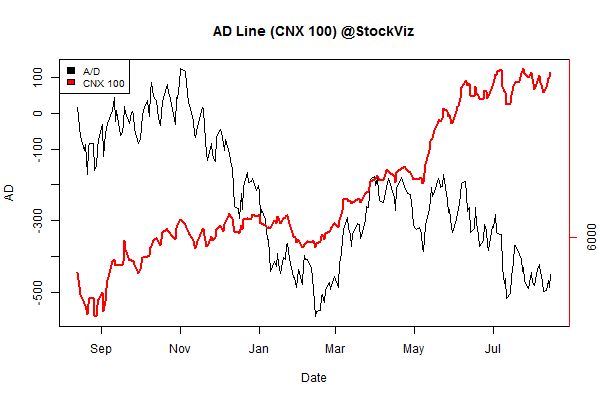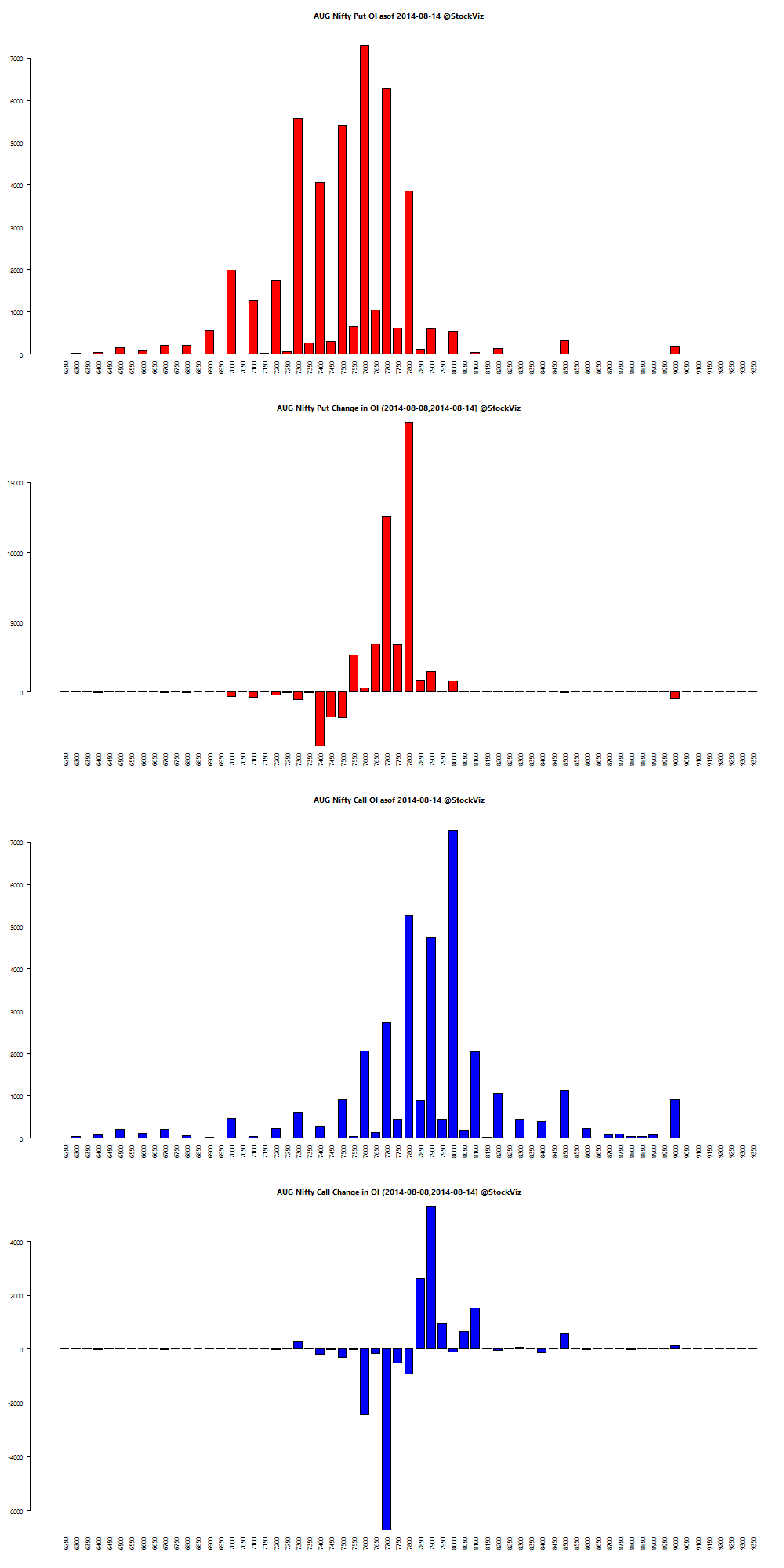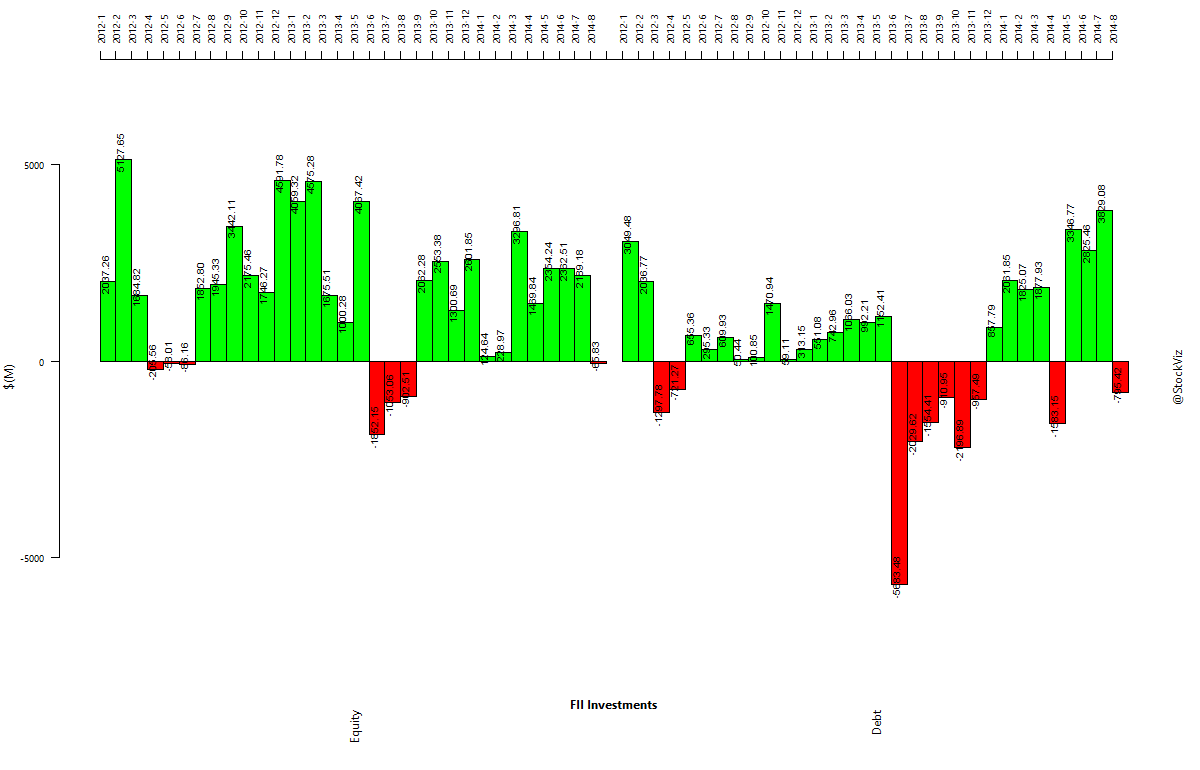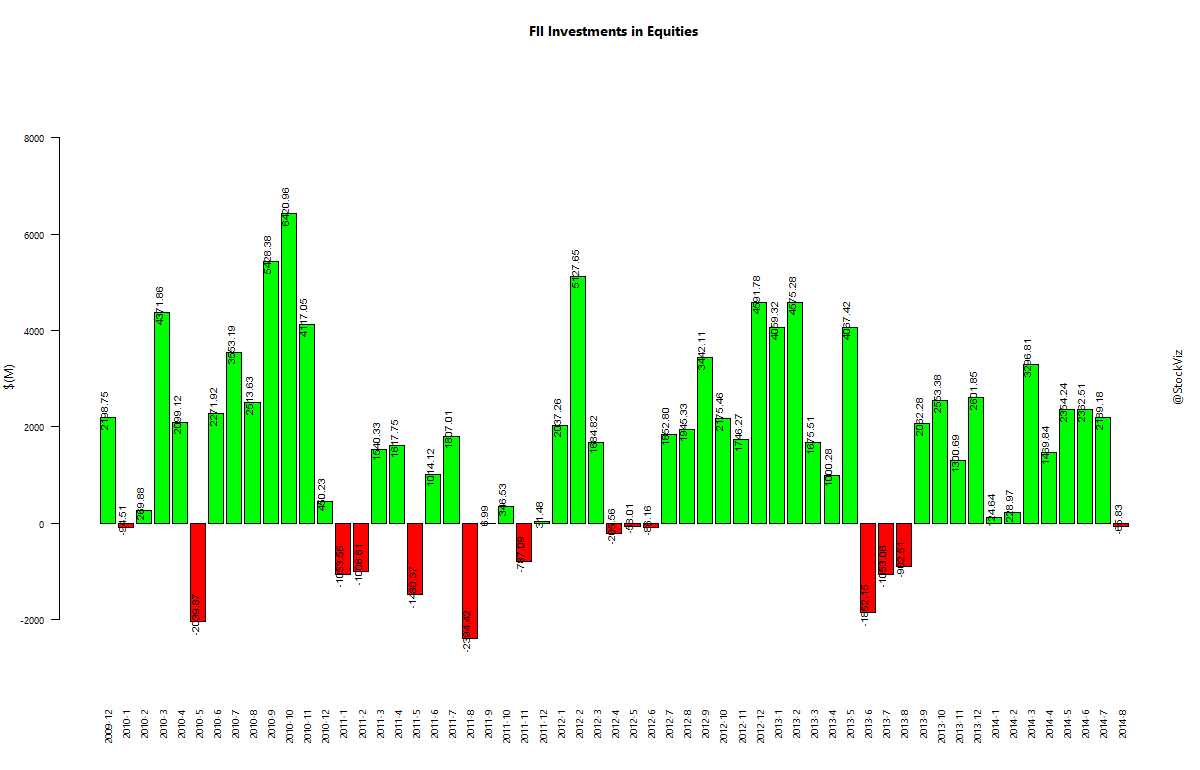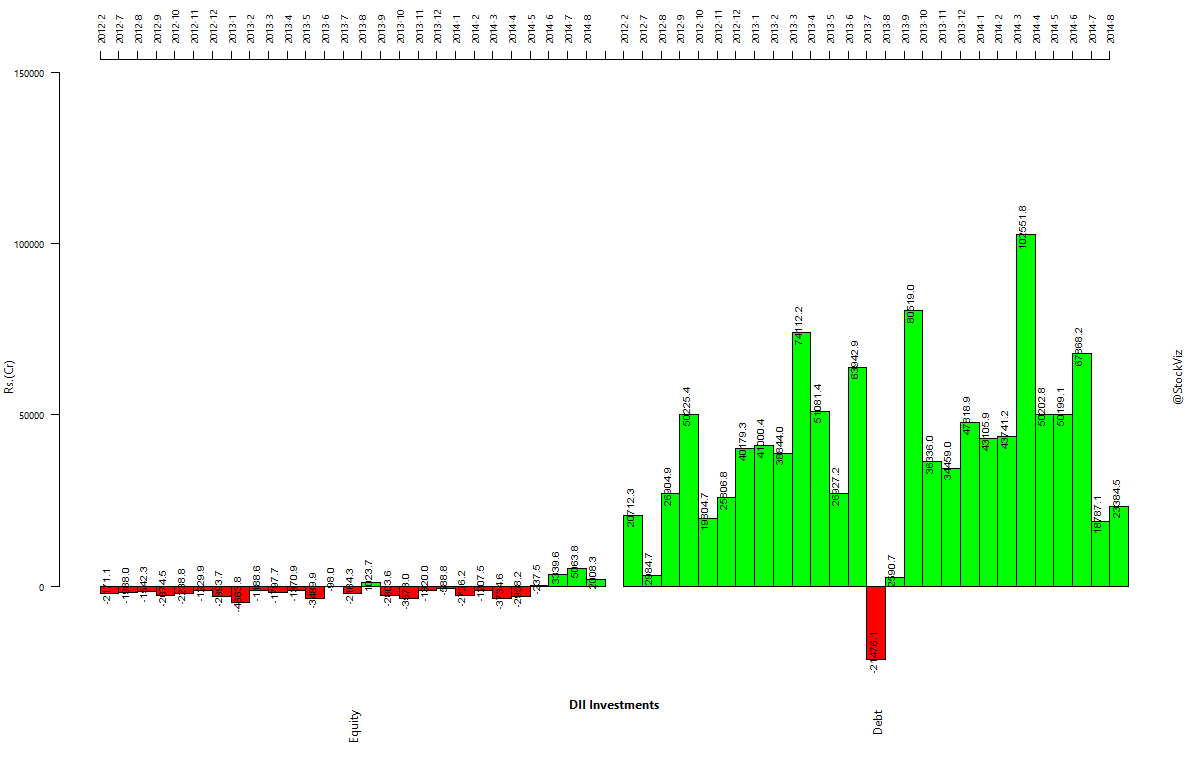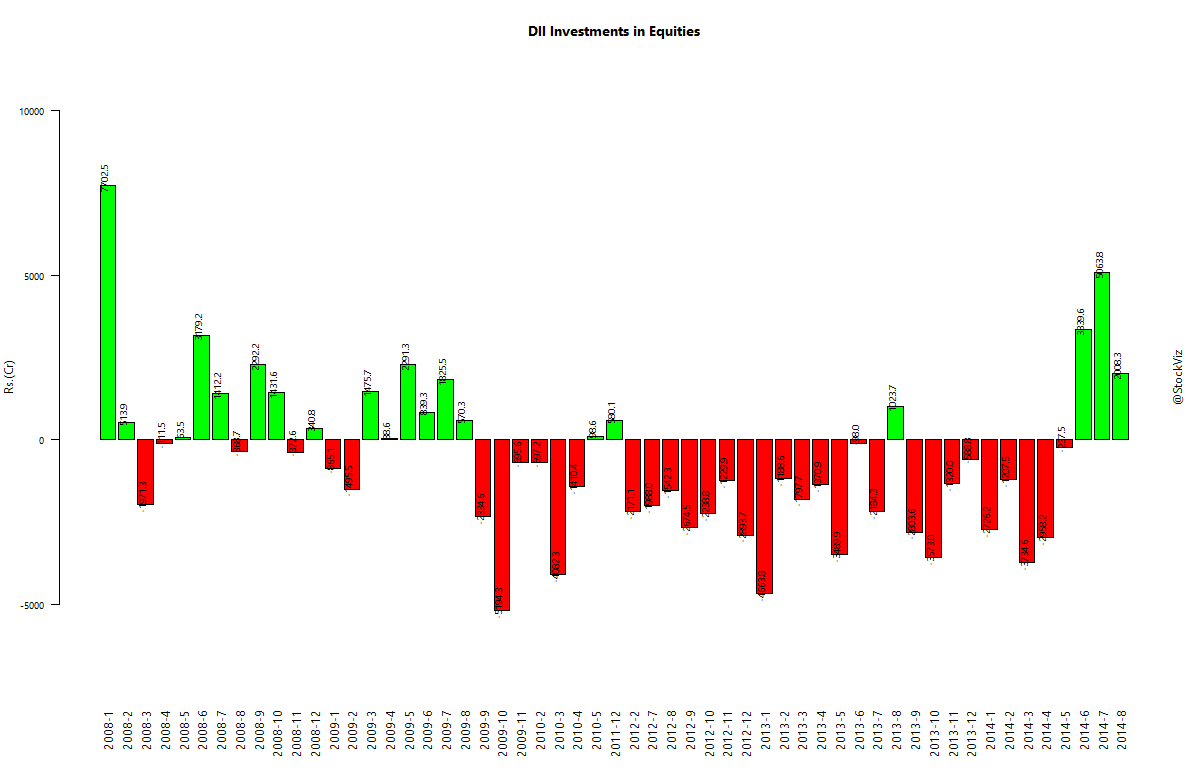The Nifty ended the week +2.95% (+3.79% in USD terms.)
Equities
| MINTs | |
|---|---|
| JCI(IDN) | +1.88% |
| INMEX(MEX) | +1.51% |
| NGSEINDX(NGA) | -2.86% |
| XU030(TUR) | -3.83% |
| BRICS | |
|---|---|
| IBOV(BRA) | +2.39% |
| SHCOMP(CHN) | +1.47% |
| NIFTY(IND) | +2.95% |
| INDEXCF(RUS) | +5.27% |
| TOP40(ZAF) | +1.21% |
Commodities
| Energy | |
|---|---|
| Brent Crude Oil | -1.13% |
| Ethanol | +6.41% |
| Heating Oil | -0.97% |
| Natural Gas | -4.59% |
| RBOB Gasoline | -1.68% |
| WTI Crude Oil | -0.31% |
| Metals | |
|---|---|
| Copper | -2.21% |
| Gold 100oz | -0.35% |
| Palladium | +3.60% |
| Platinum | -1.31% |
| Silver 5000oz | -2.01% |
Currencies
| MINTs | |
|---|---|
| USDIDR(IDN) | -0.86% |
| USDMXN(MEX) | -1.25% |
| USDNGN(NGA) | -0.36% |
| USDTRY(TUR) | +1.02% |
| BRICS | |
|---|---|
| USDBRL(BRA) | -1.07% |
| USDCNY(CHN) | -0.15% |
| USDINR(IND) | -0.61% |
| USDRUB(RUS) | +0.00% |
| USDZAR(ZAF) | -0.62% |
| Agricultural | |
|---|---|
| Cattle | -1.08% |
| Cocoa | +2.47% |
| Coffee (Arabica) | +4.01% |
| Coffee (Robusta) | +0.10% |
| Corn | +3.91% |
| Cotton | -0.81% |
| Feeder Cattle | +1.05% |
| Lean Hogs | -16.80% |
| Lumber | +0.03% |
| Orange Juice | +4.40% |
| Soybean Meal | -2.39% |
| Soybeans | -14.24% |
| Sugar #11 | -1.30% |
| Wheat | +0.82% |
| White Sugar | -0.65% |
Credit Indices
| Index | Change |
|---|---|
| Markit CDX EM | +0.62% |
| Markit CDX NA HY | +0.94% |
| Markit CDX NA IG | -4.44% |
| Markit CDX NA IG HVOL | -4.23% |
| Markit iTraxx Asia ex-Japan IG | -5.10% |
| Markit iTraxx Australia | -1.06% |
| Markit iTraxx Europe | -3.07% |
| Markit iTraxx Europe Crossover | -11.24% |
| Markit iTraxx Japan | +1.25% |
| Markit iTraxx SovX Western Europe | -1.44% |
| Markit LCDX (Loan CDS) | -0.06% |
| Markit MCDX (Municipal CDS) | -2.73% |
Nifty Heatmap
Index Returns
Sector Performance
Advance Decline
Market cap decile performance
| Decile | Mkt. Cap. | Adv/Decl |
|---|---|---|
| 1 (small) | -4.44% | 73/61 |
| 2 | -4.14% | 60/74 |
| 3 | +0.07% | 64/69 |
| 4 | -0.04% | 65/69 |
| 5 | +0.03% | 64/68 |
| 6 | -0.93% | 63/72 |
| 7 | -0.34% | 68/65 |
| 8 | +0.13% | 66/67 |
| 9 | +0.67% | 65/69 |
| 10 (mega) | +2.85% | 65/69 |
Top winners and losers
| JSWSTEEL | +10.32% |
| APOLLOHOSP | +11.29% |
| TATAMOTORS | +11.94% |
| RCOM | -4.69% |
| BHEL | -3.60% |
| HEROMOTOCO | -3.13% |
ETFs
| NIFTYBEES | +2.64% |
| BANKBEES | +2.22% |
| INFRABEES | +0.45% |
| JUNIORBEES | -0.50% |
| GOLDBEES | -0.76% |
| PSUBNKBEES | -2.31% |
Investment Theme Performance
| Industrial Value | +2.16% |
| Enterprise Yield | +1.87% |
| Balance-sheet Strength | +1.74% |
| Growth with Moat | +1.39% |
| Consistent10* | +1.35% |
| Long Term Equity* | +1.26% |
| Efficient Growth | +1.25% |
| Magic Formula Investing | +1.24% |
| CNX 100 50-Day Tactical | +1.14% |
| IT 3rd Benchers | +0.36% |
| Financial Strength Value | +0.31% |
| Momentum 200 | -0.01% |
| Refract: PPFAS Long Term Value Fund | -0.01% |
| Quality to Price | -0.22% |
| Market Elephants | -0.22% |
| ADAG Mania | -1.13% |
| Market Fliers | -1.29% |
Yield Curve
Bond Indices
| Sub Index | Change in YTM | Total Return(%) |
|---|---|---|
| GSEC TB | +0.21 | +0.08% |
| GSEC SUB 1-3 | -0.02 | +0.32% |
| GSEC SUB 3-8 | -0.29 | +1.44% |
| GSEC SUB 8 | -0.27 | +1.95% |
August Nifty OI
Both 7800 puts and 7900 calls were added.


